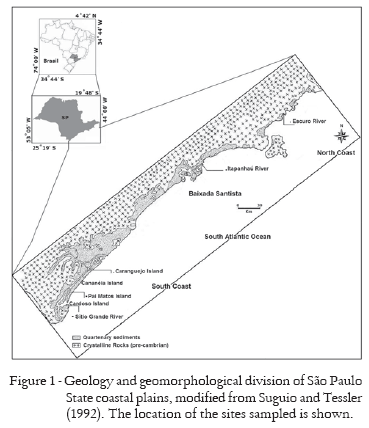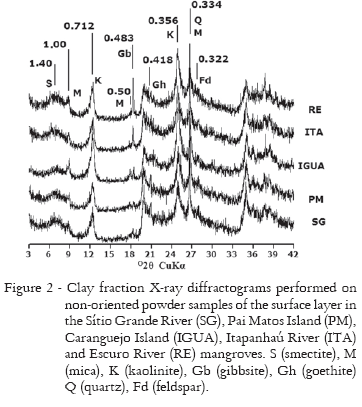Smectitic clay minerals are frequently identified in mangrove soils, but there is little information about their types and origins. Besides their importance in the agronomical and geotechnical areas, smectites play an important environmental role by adsorbing nutrients, organic pollutants and heavy metals. Smectites found in mangrove soils can be of marine or continental detrital origin, or of neoformation origin. Thus, the objective of this study was to identify the types of smectites present in the State of São Paulo mangrove soils (Brazil), and to relate them to their possible origins. Soil samples were taken in five mangroves along the State of Sao Paulo State coast line. The mineral composition of the clay fraction was identified by X-ray Diffractometry (XRD) applying the Greene-Kelly test and by Fourier transform infrared spectroscopy (FTIR). Highlighting the peaks in the 3,560 cm-1 band and in the region near 798 and 820 cm-1, there was a predominance of nontronite in the soil at the Sítio Grande River, Pai Matos Island, Caranguejo Island and Itapanhaú River mangroves, and possibly a lower concentration of ferric montmorillonite in the Escuro River mangrove. Since the continental sediments in these environments are very poor in smectite, the origin of these minerals in the mangrove soils studied is related to sedimentation left by past marine transgressions, to neoformation processes, or yet to a combination of both origins.
Greene-Kelly test; neoformation; nontronite






